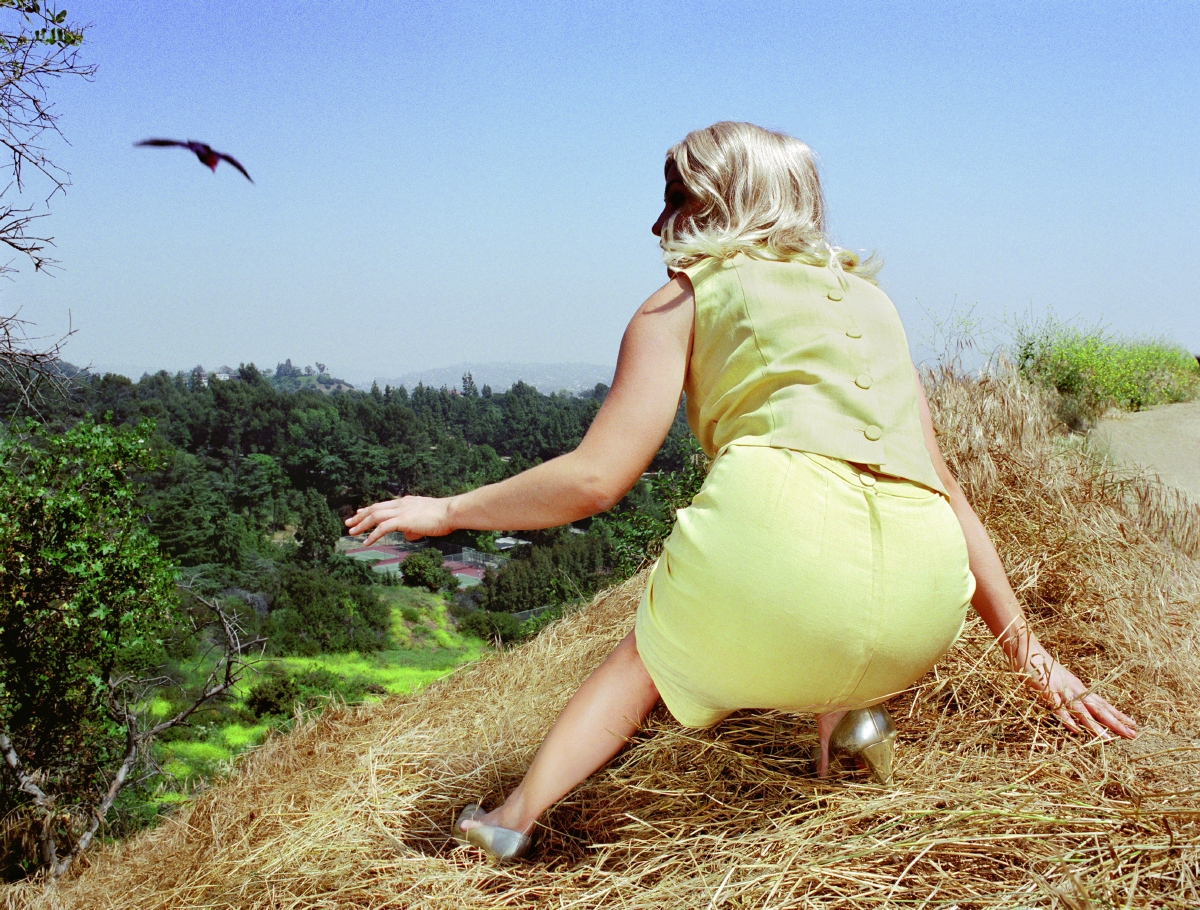by Maggie Finch
1
Unnatural stillness
A young woman with dyed-blonde hair, wearing a matching lemon top and skirt and silver pumps, crouches down on dead grass at the side of a road. She is seen from behind, balancing somewhat precariously, one hand on the ground and the other reaching out at an angle as if to prevent herself slipping down a slope to her left. Perhaps she is poised to reach out – to whom, or at what remains unclear – or perhaps she has just let go of someone or something. The brittle grass, the woman's summer attire and the strong, bright light all imply a hot summer's day. In the distance a lush valley is visible. A bird flies into the scene from top left, and the woman's anxious gaze looks across in that direction but not at the bird; what draws her attention is unknown. This is an unnatural stillness.

91.4 × 120.7 cm
Collection of the artist, Los Angeles and Lehmann Maupin Gallery, New York and Hong Kong
The reality and veracity of this photograph, titled Julie, 2007, is not clear. Details of its composition tell us everything and nothing at once. The clothes, hair and general aesthetic hint at a bygone era, and yet the period is imprecise. Composed and shot in the directorial mode, using a narrative approach to image-making pioneered by photographers such as Cindy Sherman, Jeff Wall and Gregory Crewdson, the scene is entirely pre-determined and constructed by Los Angeles–based artist Alex Prager.
The photograph is characteristic of the work for which Prager has become renowned: enigmatic narrative tableaux in which she creates intensely emotive, technicolour scenes using a strangely familiar cast of characters. Predominantly women who are immaculately groomed and wearing wigs, fake eyelashes and adorned in retro fashion, Prager's characters resemble actors of mid-twentieth-century Hollywood. Each of her photographs presents a scene of heightened emotion, and each short film presents an unresolved story that leaves you curious about its protagonists' past, present and future. It is a technique that allows Prager to construct a mediated view of contemporary relationships and experiences, presented in the language and using the aesthetics of cinema and photography.
